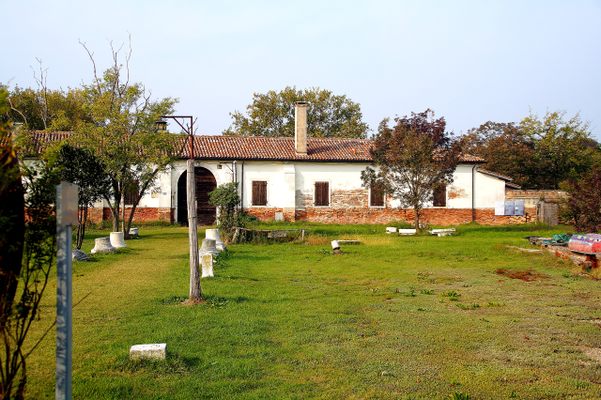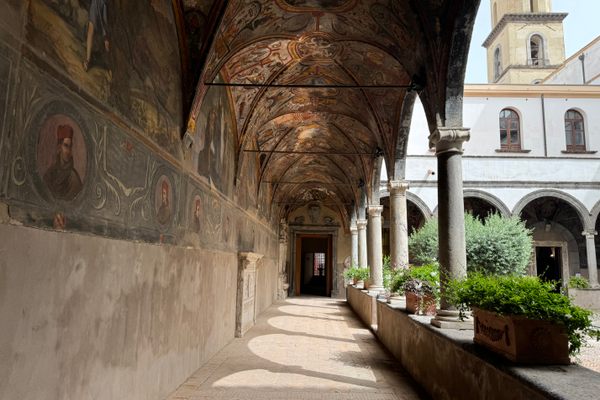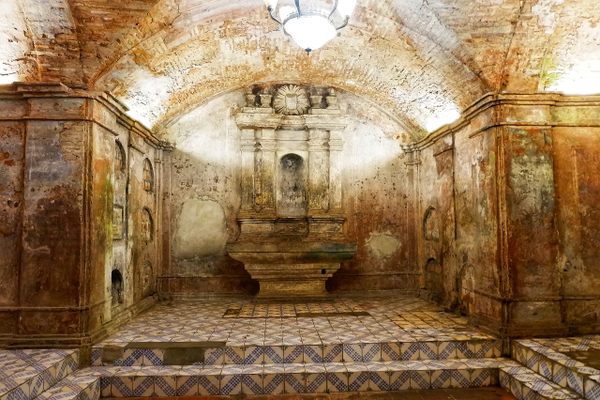About
In 2005, while uncovering mass plague graves on the Venetian island of Lazzaretto Nuovo, workers made a strange discovery: The skull of a woman, with a brick jammed into her mouth. The hundreds of skeletons unearthed were to be expected, but this skull was originally believed to be something different, as this was the prescribed method of killing a vampire.
The black death first arrived in Europe in 1348, and Venice was quick to respond to the threat. Communicable diseases hit the Maritime empire of Venice particularly hard. As a precaution, two separate quarantine stations were established to keep the diseased and the potentially diseased away from the living trapped in close quarters in the center of the city. The Lazzaretto Vecchio (Old Quarantine) was established first in 1423 as a plague hospital and quarantine. Lazzaretto Nuovo (New Quarantine) was built later, in 1468, as a kind of way station for incoming ships and cargo, where crews and goods were sequestered and searched for signs of sickness.
When particularly devastating outbreaks of the plague hit in 1576 and again in 1630, thousands were removed to outer islands like the two Lazzarettos, and most never left. Mass graves have been discovered on both islands.
Analysis on the skull discovered with a brick wedged in the mouth revealed that it once belonged to a woman between 61 and 71 years old. Although her exact story is likely never to be known, it was thought that she must have been believed to be a “Shroud Eater,” a type of vampire associated particularly with Germany and related territories.
The Shroud Eater is a different sort of vampire, not found biting the necks of voluptuous victims, but instead found still in their grave. Believed to be a sort of undead corpse, they were known for making hideous chewing sounds and were thought to cause death and destruction from a distance. There are several theories about how this particular myth came to be, but it seems to be particularly prevalent in times of plague or disease, when one death eventually leads to many more, often of friends and family members.
A Manuscript called “De Masticatione Mortuorum," Latin for “The Chewing Dead,” offered helpful tips for those facing the walking (or chewing) dead, and prescribed practical treatments such as the afore mentioned brick-in-mouth.
But at enthralling as this vampire theory may be, the brick most likely wound up in the woman's mouth due to the reuse of the cemetery in occupied spaces. In other words, the cemetery was buried with multiple layers of bodies in response to waves of plague mortality. Other remains since have sustained similar damage. The island itself was converted into defensive fortifications under Napoleonic rule, then abandoned in the 1970s.
Recent local efforts have resulted in restoration projects and the reopening of the island to the public. Today the Tezon Grande building holds a collection of maritime artifacts, and the powder magazines are home to small museums and archives dedicated to the island’s unusual history. Archaeological digs are still underway.
Elsewhere in the lagoon forgotten islands off the tourist trail hold memories of the plagues of Venice and the remains of abandoned insane asylums. The remains of the Insane Asylum on San Servolo Island are preserved as a museum dedicated to the history of Venice's plague islands and asylums, and Poveglia Island lays abandoned and off limits, still keeping its secrets.
Related Tags
Know Before You Go
Be aware that the island is ONLY accessible by prior arrangement, and only between April and October. Book through the website. Don’t go without an appointment: there are locked gates on the jetty and you’ll have to wait for the next boat to come by, which could be an hour.
Take the number 13 ferry which runs from Venice's Fondamenta Nove stop to the island of Sant' Erasmo. Ask to get off at Lazzaretto Nuovo, as the boat only stops there by request.
Flavors of Italy: Roman Carbonara, Florentine Steak & Venetian Cocktails
Savor local cuisine across Rome, Florence & Venice.
Book NowCommunity Contributors
Added By
Published
October 11, 2016




















































